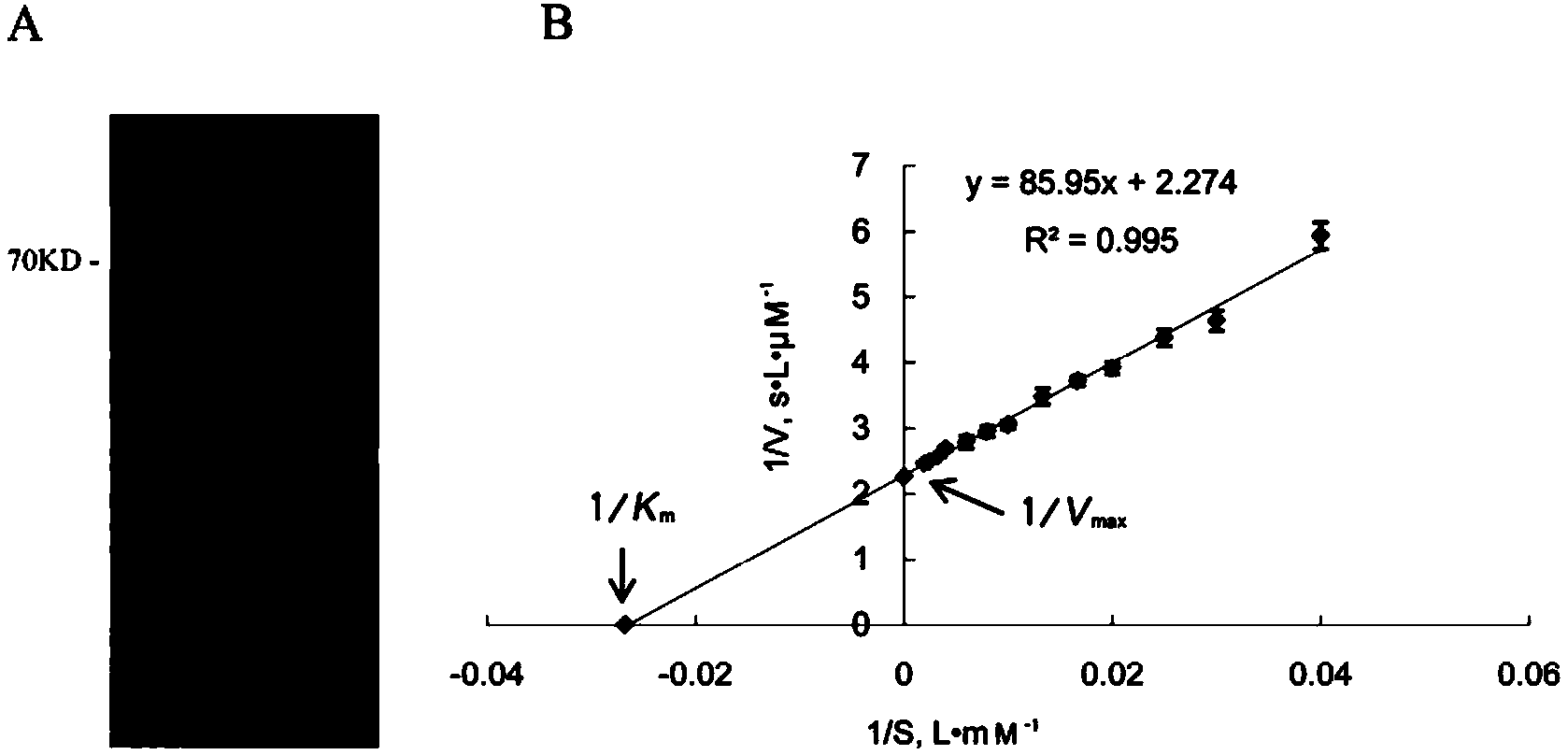Pathogenic gene Prodh of cryphonectria parasitica and application thereof
A chestnut Phytophthora bacterium, pathogenicity technology, applied in the direction of application, genetic engineering, plant genetic improvement, etc., can solve ecological damage, environmental pollution and other problems
- Summary
- Abstract
- Description
- Claims
- Application Information
AI Technical Summary
Problems solved by technology
Method used
Image
Examples
Embodiment 1
[0037] Cluster analysis of homologous proteins in embodiment 1, Prodh and other fungi
[0038] Enter the amino acid sequence of Prodh into GenBank (http: / / www.ncbi.nlm.nih.gov) for BlastP search, and obtain the amino acid sequences of homologous proteins in multiple species. JGI_277618 is the Prodh protein of Phytophthora chestnut, and the homologous proteins of Prodh protein in other fungi are: MGG_04244T0 from Magnaporthe oryzae, EGU76471 from Fusarium oxysporum, XP_750765 from Aspergillus fumigatus, XP_002557716 is from Penicillium chrysogenum and XP_001587046 is from Sclerotinia sclerotiorum. The phylogenetic tree was constructed using the Neighbor-joining method of the MEGA4.0 software, and the bootstrap test was selected for 1000 times during the tree building process, and displayed in TREEVIEW. as attached figure 1 The clustering of Prodh and homologous proteins in other phytopathogenic fungi analyzed the evolutionary conservation and kinship of the protein ( figure ...
Embodiment 2
[0039] Prokaryotic expression and enzyme activity detection of embodiment 2, Prodh
[0040] 1) Prokaryotic expression of Prodh: use the software MitoPro II to predict the Prodh signal peptide to be 1-21aa, prepare the total RNA of EP155 as in 1) and 3) of Example 4, synthesize the first strand of cDNA, and use the primer Prodh-f-EcoRI (5 '-atagaattcatgagggccaaagcaccact-3') and Prodh-r-XbaⅠ (5'-taatctagattacgccgtcacccccaatg-3') to amplify the cDNA sequence of the Prodh deletion signal peptide (1-21aa) and clone it into the prokaryotic expression vector pGEX-4T- The recombinant expression plasmid pGEX-4T-ProdhΔ21 was obtained in the EcoRI / SalⅠcloning site of 1. The recombinant plasmid was introduced into the competent cells of Escherichia coli expression host BL21 by chemical transformation method, and spread on the LA plate containing 100 μg / mL ampicillin for recombinant screening. After the obtained transformants were identified by electrophoresis analysis and enzyme digestio...
Embodiment 3
[0042] Example 3, Functional Research of Prodh Gene in Phytophthora Chestnut
[0043] 1) Construction of knockout cassette
[0044]The left arm forward and reverse primers were Prodh-A (5'-tagccacggcattctgaggagcaac-3') and Prodh-3 (5'-tctttctagaggatccccgggtaccgttgactcgacggtggtatgc-3'), and the right arm forward and reverse primers were Prodh-2 (5' -atatcatcttctgtcgacctgcaggctcgtgagacatgacagtacc-3') and Prodh-B (5'-ctcaaggtcaacaaatactacaagc-3'), the amplification template is EP155 total DNA, and the amplified target fragment sizes are 885bp and 905bp respectively. The forward and reverse primers of hygromycin phosphotransferase gene (hph) were hph-F (5’-cggtacccggggatcctctag-3’) and hph-R (5’-gcctgcaggtcgacagaagatg-3’), respectively, and the amplification template was plasmid pCPXHY2. By means of fusion PCR, the left and right arms were fused to both sides of hph respectively in the upstream and downstream order to form a gene replacement knockout cassette. The 2145bp hph repl...
PUM
 Login to View More
Login to View More Abstract
Description
Claims
Application Information
 Login to View More
Login to View More - R&D
- Intellectual Property
- Life Sciences
- Materials
- Tech Scout
- Unparalleled Data Quality
- Higher Quality Content
- 60% Fewer Hallucinations
Browse by: Latest US Patents, China's latest patents, Technical Efficacy Thesaurus, Application Domain, Technology Topic, Popular Technical Reports.
© 2025 PatSnap. All rights reserved.Legal|Privacy policy|Modern Slavery Act Transparency Statement|Sitemap|About US| Contact US: help@patsnap.com



